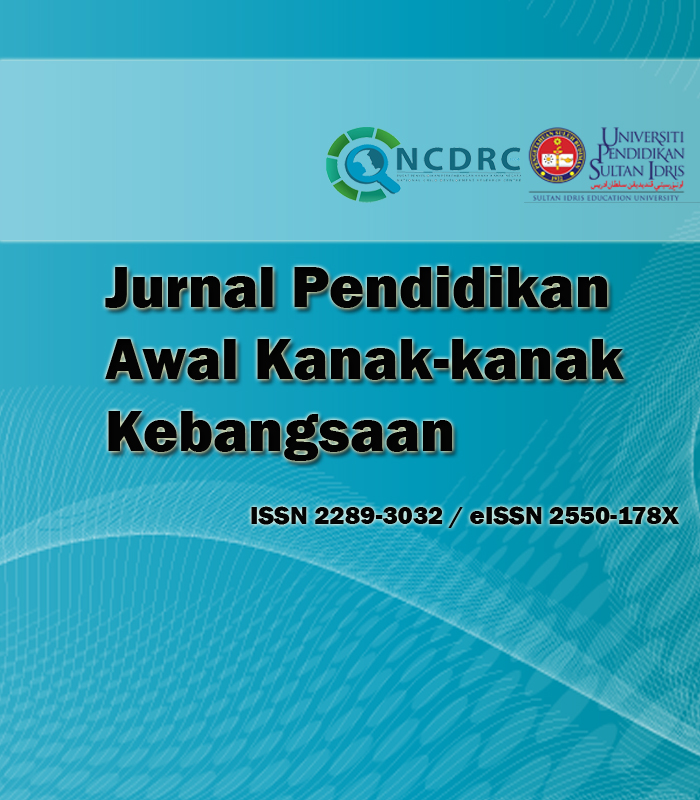CVC Malay Closed Syllabic Spelling Techniques Regressively (Back to Front): An Analysis of Malay syllabication theory
Teknik pengejaan Suku Kata Tertutup Bahasa Melayu KVK secara Regresif (Dari Belakang Ke Depan): Satu analisis teori pengsukukataan Bahasa Melayu
DOI:
https://doi.org/10.37134/jpak.vol12.2.1.2023Keywords:
reading skills, syllabification theory, closed syllablesAbstract
This study is a study related to the technique of spelling closed syllables in Malay (KVK). The objective of this study is to describe the technique of spelling closed syllables regressively (from back to front) by using Malay syllabification theory. The research method used in this study is a qualitative method that using the Malay syllabification theory modified from Goldsmith's syllabification theory (2011). The qualitative study used in this study is a bibliographic method, which involves reading written materials related to Goldsmith's (2011) syllabification theory and its application to Malay syllables. The findings of this study are an explanation related to the technique of spelling closed syllables (KVK) in Malay language. This technique of spelling closed syllables begins with the sounding of phonemes or letters that follow the International Phonetic Alphabets (IPA) phoneme sound and then the process of spelling closed syllables regressively, that is from right to left. This spelling process is that the vowel in the nucleus position needs to be combined with the consonant in the coda position to form a rhyming sound (VK). In the next step, the consonant in the onset position will be combined with the previous rhyme sound to produce the sound of the closed syllable KVK. In conclusion, this study is expected to be able to make it easier for teachers to teach pupils or children about closed syllables in Malay language.
Downloads
References
A. Jailani Bin Che Abas. (2012). Analisis Kecelaruan Membaca Bahasa Melayu Pelajar Kelas Intervensi Awal Membaca dan Menulis (KIA2M). Disertasi Sarjana Linguistik. Fakulti Bahasa dan Linguistik. Universiti Malaya.
Bung Qian Min, et al. (2022). Kesedaran Dan Keperluan Guru Mengenai Modul Teknik Bacaan Dialogik Di Prasekolah SJKC. Jurnal Pendidikan Awal Kanak-kanak Kebangsaan (Special Issue). Vol 11 (1): 22-34.
Chew Fong Peng. (2015). Pelaksanaan Program Literasi Dan Numerasi (LINUS) Di Sekolah Rendah. Jurnal Pendidikan Bahasa Melayu. Vol. 5, Bil. 2 (Nov. 2015): 1-11.
Chew Fong Peng & Mohd Fikri Ismail. (2020). Pelaksanaan Pendekatan Bermain Dalam Pengajaran Dan Pembelajaran Bahasa Melayu Murid Prasekolah. Jurnal Pendidikan Awal Kanak-kanak Kebangsaan (Special Issue). Vol 9 (1): 14-25.
Goldsmith, John. (2011). The Syllable. In Goldsmith, John et al.. (2011). The Handbook of Phonological Theory. Wiley-Blackwell.
Nabilah Asha, et al. (2020). Penggunaan Big Book Dalam Kalangan Guru Tadika Untuk Perkembangan Literasi Kanak-kanak. Jurnal Pendidikan Awal Kanak-kanak Kebangsaan (Special Issue). Vol 9: 106-112.
Nur Syakirah Binti Azizan & Muhammad Saiful Haq Bin Hussin. (2017). Penguasaan Asas Membaca Melayu Melalui Program LINUS Di Utara Semenanjung Malaysia. Jurnal Pengajian Melayu. Jilid 28: 135-163.
Wan Nurzuliana Wan Ahmad. (2019). Amalan Guru Dalam Melaksanakan Kemahiran Literasi Bahasa Melayu Bagi Program LINUS Di Sekolah Rendah. Jurnal Pendidikan Bahasa Melayu. ISSN: 2180-4842. Vol. 9, Bil. 1 (Mei 2019): 1-11.
Zamri Mahamod. (2014). Inovasi P&P Dalam Pendidikan Bahasa Melayu. Penerbit Universiti Pendidikan Sultan Idris.
Downloads
Published
How to Cite
Issue
Section
License
Copyright (c) 2023 Mohamad Rozi Kasim

This work is licensed under a Creative Commons Attribution-NonCommercial-ShareAlike 4.0 International License.





